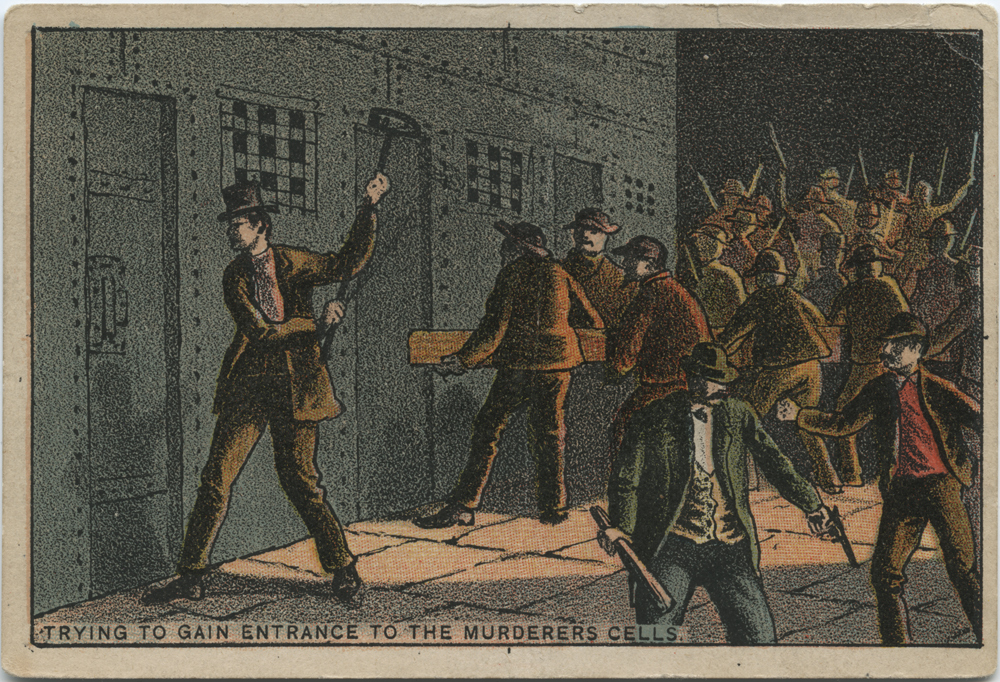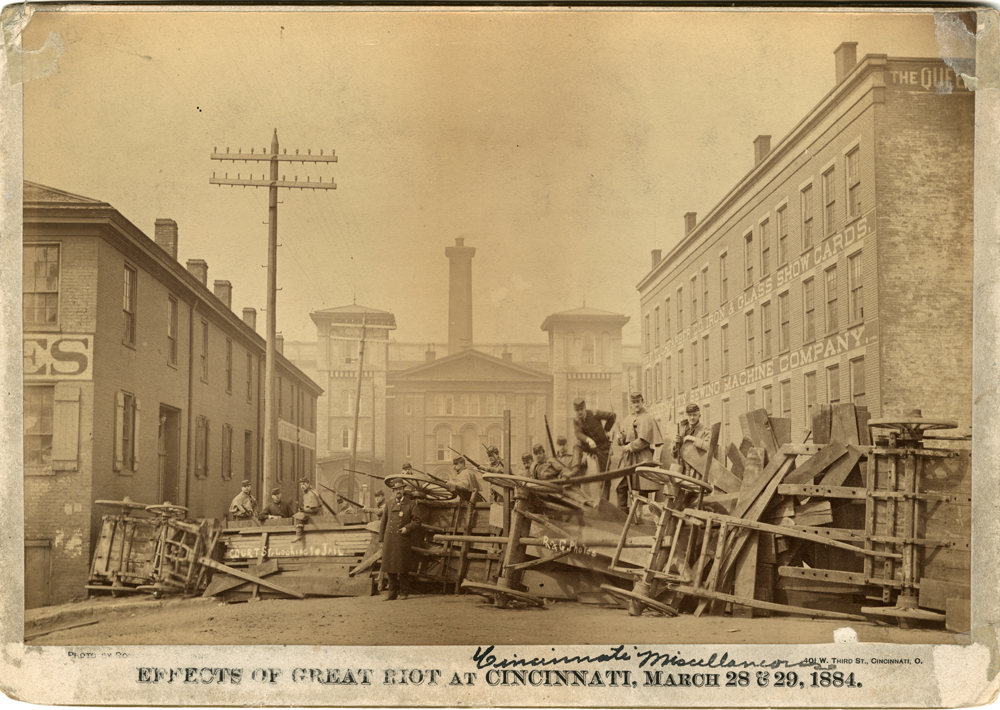With the morgue at capacity, victims of Cincinnati’s 1884 Courthouse Riot lay in makeshift infirmaries and nearby drug stores, a grim tally of 56 dead and nearly 300 wounded. The Courthouse was a ruin, a century of legal records in ashes.

Photograph courtesy of the collection of the Public Library of Cincinnati and Hamilton County
The spark that ignited three days of rage was a jury, almost certainly bought and paid for, that returned a verdict of manslaughter in a sensational homicide case for which abundant evidence, including a signed confession, clearly supported a judgment of premeditated murder. But Cincinnati’s anger had simmered for years before it exploded into violence and anarchy.
Since the Civil War, the foul stench of corruption had permeated City Hall and the Courthouse. So blatant was the disregard for law that the “ring” in charge of the local machine was bipartisan. Democrat John Roll McLean, publisher of The Enquirer, conspired with Republican attorney Thomas C. Campbell to feed on the public trough. Porkopolis reveled in the pork barrel.
In every election, “floaters” voted early and often. Jurors lined up to exchange verdicts for bribes or favors. The police department was stuffed with political featherbedders. Laws—notably those mandating that saloons close on Sunday—went unenforced. Murderers and rapists walked the streets. It had been decades since a white man was hanged in Cincinnati.
On Christmas Eve 1883, William Berner, ne’er-do-well son of a German grocer, and his accomplice Joseph Palmer, lusting for William Kirk’s bankroll, bludgeoned and then strangled the West End livery owner. Police had Berner’s confession and a string of witnesses, but his attorney, ringleader Campbell, had the jury in his pocket. Even the judge expressed disgust at the lenient verdict.

Photograph courtesy of the collection of the Public Library of Cincinnati and Hamilton County
Music Hall was packed the night Berner was sentenced. Cincinnati’s leading citizens speechified in favor of a measured yet forceful protest and for reforms to the criminal justice system. But the audience howled for blood. As the standing-room throng of 10,000 angry men poured onto Elm Street, one cried out, “To the jail! Come on! Follow me and hang Berner!” The riot was on.
Just how bad was it? Ask the Fourth Regiment of the Ohio National Guard. Called in to reinforce the beleaguered police and local militia, they took one look at the bloody melee, about-faced, and skedaddled back to Dayton.
Wave after wave of insurgents stormed the jail on Sycamore Street behind the Courthouse, each assault parried by the Sheriff, who called for reinforcements. The riot alarm brought out thousands more spectators, many of whom joined in the frenzy. Overeager militia, ordered to fire over the mob, instead loosed volleys directly into the mass of humanity. Among the slaughtered were rioters and cops as well as other militia members. The indiscriminate gunfire pushed the furious horde to greater heights of bloodlust. Gangs ransacked pawnshops and gun dealers, while deputized marshals shot innocent passersby and each other. Skirmishers drizzled kerosene on piles of looted furniture at the Courthouse doors. The inferno lit the sky for miles around.
Far across the ocean, French novelist Victor Hugo saw amid the Courthouse flames the dawn of a new age. In a letter to Cincinnati’s Literary Club, Hugo announced, “The rioters of Cincinnati inaugurated the era of glorious revolution; they were champions of justice; they were more than champions; they were heroes; they were more than heroes, they were men. The world says so, France says so—I say so.”
Within days the local Bar Association went to work revising problematic court procedures. Campbell was briefly disbarred. A Committee of One Hundred demanded voting reform, and a Committee of Five Hundred assailed Sunday saloon sales. The police department reorganized under an independent commission. The unlucky prisoners left in the jail faced the hangman rather than friendly juries.

Photograph courtesy of the collection of the Public Library of Cincinnati and Hamilton County
Unfortunately, the riot’s longest-lasting impact was engineered by a young saloonkeeper named George Barnsdale Cox. Watching from the sidelines, he recognized a vacuum opening in the city’s power structure and made his move. Within four years, he earned the nickname of “Boss” Cox and controlled, for another 30 years, a political machine that eclipsed the old McLean-Campbell ring.
The excesses of his regime inspired a plethora of opposition movements that mostly neutralized each other rather than reining in Cox. In 1924, attorney Murray Seasongood energized a coalition of reform parties, progressive crusaders, good government proponents, and the city’s elite to form the Charter Committee, which led citizens to approve a city manager system, honest elections, civil service hiring, and a slimmed-down city council. It took another generation, but the fire that had been lit in 1884 finally consumed Cincinnati’s political machines.





Facebook Comments